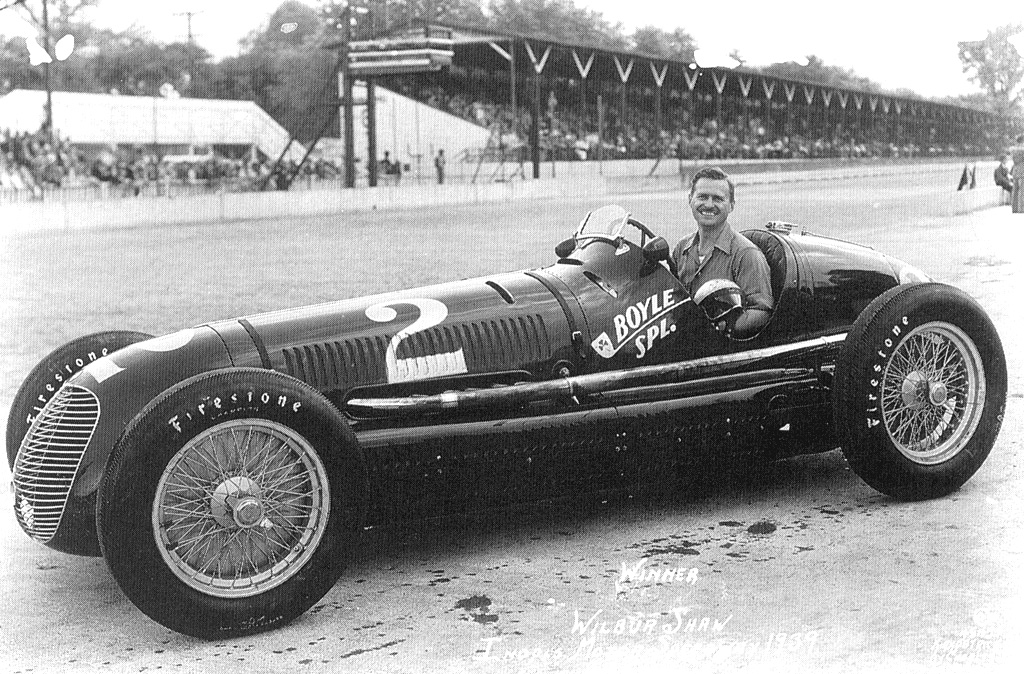However, it is the secondary things that each driver has done that should make them unforgettable. Their actions have allowed the Indianapolis 500 to be what it is today.
Louis Meyer came onto the scene with authority in his rookie campaign in 1928. With the race in hand and five laps left to go, leader Jimmy Gleason stops his Duesenberg for water. A crew member hits the magneto instead of the radiator, knocking Gleason out of the race. A patient Meyer, driving a two-year-old chassis, takes the lead and runs a steady race. He hangs on to win by 44 seconds, the closest finish to date.
Patients paid off again for Meyer in the 1933 race. He started sixth out of a record 42 starters, and just bides his time as others in front of him drop out with car problems. He leads 71 laps en route to a three-lap victory over Wilbur Shaw.
The 1936 race might be the most impressive of Meyer's three wins at the Brickyard. He charges from starting 28th and is leading by the half-way point of the race. He momentarily gives up the lead during a pit stop, but retakes the lead on lap 146 and drives on to victory in record time. He wins by two minutes, 17 seconds. He joins Ray Harroun (winner of the first Indy 500 in 1911) atop the record books for winning from furthest back on the starting grid.
Meyer became the first three-time winner in Indy 500 history, but the traditions he set in the 1936 race are even more legendary than his status as a master of the Brickyard.
 First, the 1936 race was the first year of the Borg-Warner trophy. Every race winner's face is etched into the trophy, which is still given today to the winner of the Greatest Spectacle in Racing.
First, the 1936 race was the first year of the Borg-Warner trophy. Every race winner's face is etched into the trophy, which is still given today to the winner of the Greatest Spectacle in Racing.Second, at the suggestion of former winner Tommy Milton, Meyer gets to drive home in the Packard One-Twenty pace car, starting a winning tradition that still lives on today.
Finally, a tradition unique to the Indianapolis 500 and what many drivers consider the greatest part of winning the greatest race, was started by Louis Meyer. After winning the race on a hot day, Meyer did what he often did to refresh himself: drink buttermilk. A member of the Milk Foundation captured the moment and vowed that it would be repeated in subsequent years. From 1947 to 1955, milk was apparently not offered to the winner. However, it returned in 1956 and has made an annual appearance every year since. Everybody knows the Indianapolis 500 is synonymous with the famous drinking of milk in Victory Lane, and it's all thanks to Louis Meyer.
 The first racer to continue the tradition that Meyer unknowingly started was 1937 race winner Wilbur Shaw, and he did it in thrilling fashion! Shaw led on lap 27 and was in control for most of the way. He leads by over a lap with 20 laps to go, but his car is low on oil. He has to slow down to preserve his engine, allowing second place Ralph Hepburn (driving the car Meyer drove to Victory Lane the year prior) to catch him. They are together on the last lap, and Shaw wins a drag race to the checkered flag, winning by 2.16 seconds, by far the closest in the 25 year history of the race.
The first racer to continue the tradition that Meyer unknowingly started was 1937 race winner Wilbur Shaw, and he did it in thrilling fashion! Shaw led on lap 27 and was in control for most of the way. He leads by over a lap with 20 laps to go, but his car is low on oil. He has to slow down to preserve his engine, allowing second place Ralph Hepburn (driving the car Meyer drove to Victory Lane the year prior) to catch him. They are together on the last lap, and Shaw wins a drag race to the checkered flag, winning by 2.16 seconds, by far the closest in the 25 year history of the race. Shaw finished second in 1938, over three laps behind a dominant performance from Floyd Roberts.
Louis Meyer leads 79 laps in 1939, but is passed with 16 laps to go by Shaw in another great battle between the two former-winners. Meyer ends up in the inside wall with two laps left, Shaw ends up in Victory Lane, winning by just under two minutes.
Shaw is part of a great front-row battle with Mauri Rose and Rex Mays in the 1940 race, the three keeping the lead to themselves through the race. However, Shaw takes command and pulls away to nearly a full lap advantage. Rain starts to fall, though, bringing the three frontrunners back together. What might have been an exciting finish turns into Shaw's easiest victory, as the slow-moving parade under caution lasts the last 50 laps. Shaw became the first driver to win back-to-back Indy 500s.
Louis Meyer and Wilber Shaw did so much for the Indy 500 that they deserve to be enshrined and remembered forever in the IMS Museum and Hall of Fame. And that's not even considering each driver's three trips to Victory Lane. Both Meyer and Shaw are legends of the Speedway.







No comments:
Post a Comment
We love to hear your feedback! This site is created by the fans and for the fans. But please, keep it clean. Any lewd, obscene, or irrelevant comments will be removed immediately.